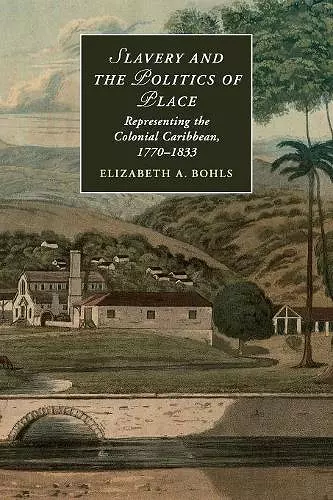Slavery and the Politics of Place
Representing the Colonial Caribbean, 1770–1833
Format:Paperback
Publisher:Cambridge University Press
Published:23rd Mar '17
Currently unavailable, and unfortunately no date known when it will be back
This paperback is available in another edition too:
- Hardback£90.00(9781107079342)

This book analyzes representations of the places of British slavery - Africa, the Caribbean, and Britain - in writings by planters, slaves and travellers.
Elizabeth A. Bohls presents an interdisciplinary study of non-fictional literature about the colonial Caribbean, 1770–1883. Particular attention is given to the ways in which arguments for and against slavery permeated all sorts of texts, including those overtly concerning language, natural history, geography, aesthetics or domestic life.Geography played a key role in Britain's long national debate over slavery. Writers on both sides of the question represented the sites of slavery - Africa, the Caribbean, and the British Isles - as fully imagined places and the basis for a pro- or anti-slavery political agenda. With the help of twenty-first-century theories of space and place, Elizabeth A. Bohls examines the writings of planters, slaves, soldiers, sailors, and travellers whose diverse geographical and social locations inflect their representations of slavery. She shows how these writers use discourses of aesthetics, natural history, cultural geography, and gendered domesticity to engage with the slavery debate. Six interlinked case studies, including Scottish mercenary John Stedman and domestic slave Mary Prince, examine the power of these discourses to represent the places of slavery, setting slaves' narratives in dialogue with pro-slavery texts, and highlighting in the latter previously unnoticed traces of the enslaved.
'Bohls' wide-reaching analysis of multiple genres by a variety of authors convincingly makes the case that the politics of place played a crucial role in constructing the West Indian colonies in the British imagination … Bohls makes a valuable contribution by examining both sides of the debate, situating slavery within the project of empire, and showing how writers and artists from both camps made use of Romantic aesthetics to argue for or against slavery.' Lisa Ann Robertson, Journal of Romanticism
ISBN: 9781107438163
Dimensions: 230mm x 154mm x 14mm
Weight: 420g
280 pages